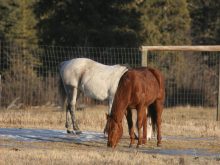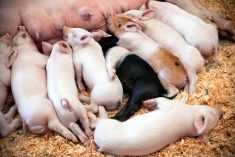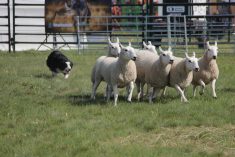Last year was one of renewal and expansion for the big five purebred beef associations.
The last couple of years have been stellar for the Canadian Angus Association. A record 51,208 purebred cattle were registered in 2000. The first quarter of 2001 has already surpassed the same time last year, said association manager Doug Fee.
There is heightened interest in Angus cattle because of the green tag program that allows Angus-influenced cattle to be identified with a special ear tag.
“So many branded beef programs are looking for Angus,” he said.
Read Also

Why selenium is still an important factor in horse health
Selenium is an essential equine trace mineral that supports antioxidant defense, muscle integrity, immune function, metabolism and thyroid activity.
“We can’t keep up.”
After a few years of declining numbers, the Canadian Simmental Association registered more than 29,000 animals in 2000. The numbers continued to climb in the first three months of this year.
“We have had some phenomenal sales this year,” said Sharonne Evans of the Simmental association. While prices on the farm and in the sales ring have been encouraging, producers continue to be mindful of quality.
“People are more selective in what they are registering.”
The Canadian Hereford Association also reports a resurgence in registration numbers.
“We registered twice as many cattle from this year’s calf crop than we did in 1999 so it has been a fabulous year,” said Jacques DeCorby at the Hereford office in Calgary.
The association registered 25,500 calves last year. Additional registrations of older animals brought the total to more than 29,000 head.
Production sales have been especially profitable. Not only are breeders sold out of breeding stock, but customers are paying more for what is available.
More heifers are in demand as people look to rebuild cow herds after several years of record numbers of females going on feed.
DeCorby attributes part of their renewal to the desire for British-influenced cattle. Beef producers are chasing after carcass merit to improve eating quality.
“People are now reinvesting in the future.”
Numbers are also up substantially at the Canadian Limousin Association. Registered cattle increased to 15,416 in 2000 from 10,990 in 1999.
Good support from purebred members for whole herd enrolment plans is part of the reason for the increase, said Debbie Verbonac, marketing manager for the Limousin association. Breeders are encouraged to register their entire herd rather than select individuals.
This gives breeders access to better record keeping and animal monitoring.
“It’s going to be great all around,” Verbonac said.
“When it comes time to transfer to another purebred or commercial person, we can keep better track of animals and keep people abreast of what is new.”
Larger herds
The Canadian Charolais Association reported that registrations and transfers have increased substantially. Recordings of performance records are at an all-time high, said Sean Magrath.
Membership has declined somewhat, but there is a trend toward larger herds. Members registered 36,200 animals last year compared to 24,000 in 1999.
While some administrative changes have been made in registration fee structures and reporting procedures, the major beef breeds agree that better record keeping is part of a modern marketing plan where performance records are a must.
“It’s pretty tough to sell a bull without records,” Magrath said.
“People are pretty serious about what they are doing. They want to register their cows or they’re out of the ball game.”
The whole herd enrolment programs were initiated by some beef breeders in 1998.
It is a cow-based performance system where each breeding female is reported on every year. Breeding and calving information must be reported.
A dam must have a calf reported or her failure to have a calf must be explained. As well, detailed disposal information is collected on cows that are culled.
In addition, several Canadian breed associations have standardized their genetic and breeding statistics with American seedstock organizations.
This places Canadian genetics on a more even footing with the American product and makes international sales easier because their records are more comparable.















